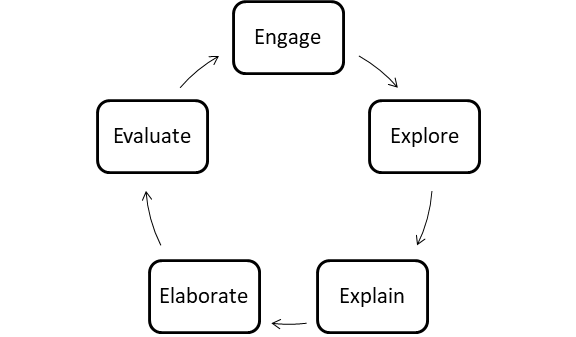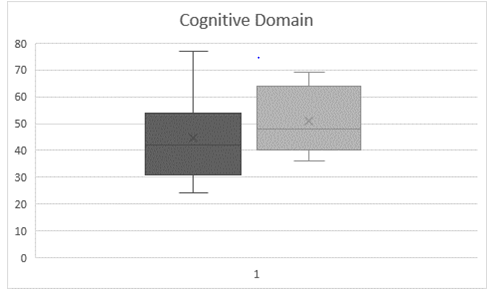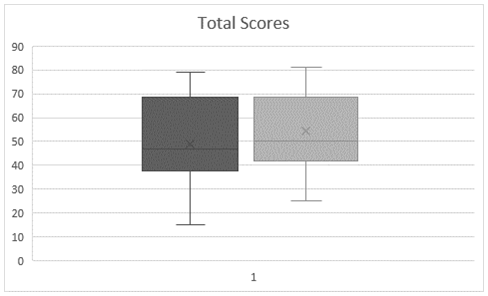A Novel 5E Training Model and other Methods Implemented for Rapid Readiness at an Ad-Hoc COVID-19 Facility in New Delhi
Suhail Singh*, Aparajita and Anchit Raj Singh
Suhail Singh*, Aparajita and Anchit Raj Singh
Department of Internal Medicine, Armed Forces Medical College, India
- *Corresponding Author:
Received Date: September 03, 2021; Accepted Date: September 17, 2021; Published Date: September 24, 2021
Citation: Singh S, Aparajita , Singh AR (2021) A Novel 5E Training Model and other Methods Implemented for Rapid Readiness at an Ad-Hoc COVID-19 Facility in New Delhi. Med Case Rep Vol.7 No.9.202
Abstract
Background: Severe Acute Respiratory Syndrome Coronavirus 2 (SARS-CoV-2) originated in Wuhan, China in late 2019. An ad-hoc dedicated Coronavirus Disease 2019 (COVID-19) Hospital was setup in New Delhi over a span of 12 days. At this time, new teaching modalities were employed to train the staff with evolving information related to management of COVID-19. This study aims to identify and quantify the effectiveness of these teaching models in terms of learning which was evaluated using case scenarios before and after the teaching session with web based survey tools.
Objectives: To assess education methods and models for training of HCWs during rapid deployment at an ad-hoc dedicated COVID-19 hospital in New Delhi.
Methods: The 5E (Engage, Explore, Explain, Elaborate and Evaluate) teaching modality through peer group teaching methods was utilised in the situation. Four case scenarios, each with five questions were handed out both pre and post the training module. Statistical analysis was done using Mann Whitney U test.
Results: A total of 86 participants (43 doctors and 43 nurses) answered the pre and post-test questionnaires. The total numbers of correct responses were 980 (56.97%) (Mean+SD=48.94+9.17) pre-test versus 1088 (63.25%) (Mean+SD=51.04+9.06) post-test. Post teaching module, the number of correct responses had increased. No significant difference was found in the pre and post-test responses.
Conclusion: An increase in the correct responses to the case oriented scenarios was found. Studies of this nature will contribute towards assessing efficacy of teaching modalities employed in rapid readiness in future.
Keywords
COVID-19; Education; Health care providers; Peer group; 5E methodology
Introduction
At the dawn of 21st century, mankind was faced with a daunting challenge, the Coronavirus Disease 2019 (COVID-19) pandemic. The disease was believed to have been originated in the Wuhan province of Chine, in December 2019 [1]. The World Health Organisation declared this as a pandemic on 11 March 2020. In the current scenario, with the disease spreading over 220 countries and affecting over 17 million people and a death toll of more than half a million, healthcare facilities have been established throughout the world to tackle the rising numbers [2,3].
In these desperate times, the healthcare providers have come up with newer means to battle this disease. This includes establishment of ad hoc healthcare facilities built exclusively for COVID-19 positive patients. These include a 1000 bedded facility, a temporary COVID-19 hospital that has been setup in the Indian capital, New Delhi over a span of 12 days. The hospital was run by staff flown to Delhi and deployed in this hospital over a span of 2 days. The health care workers (HCWs) of varied experience and specialities needed innovative teaching modalities to provide them with latest information regarding management of COVID-19 in as little time as possible, while ensuring that adequate working knowledge was communicated. This was attempted using the 5E (Engage, Explore, Explain, Elaborate and Evaluate) teaching modality through peer group teaching methods. Here, we look at the newer teaching methods and models that were used during one such session and their impact on the knowledge and behaviours of the HCWs.
The study aims to identify and quantify the effectiveness of these teaching models in terms of learning which was evaluated using case scenarios before and after the teaching session using web based survey tools.
Materials and Methods
This study reports results of a pre and post teaching crosssectional online questionnaire conducted in a population of health care workers, which included doctors and nurses deployed in management of COVID-19 infection in a temporary 1000 bedded COVID-19 hospital. Four case scenarios, each with five questions were handed out. The answers were collected on the spot. The questions were divided to assess cognitive and affective domains of learning (eight of the twenty questions were affective and the remaining cognitive). The learning modalities used were 5E and peer group teaching methods.
The study was based in a dedicated 1000 bedded COVID-19 hospital, set up in the national capital of India, Delhi, in view of the surge in number of COVID-19 cases. HCWs involved in direct patient care in this hospital constituted the study population. Our study included a total of 86 participants. Clearance from the Institutional Ethics Committee was taken.
An hour long session was conducted for both doctors and nurses, before which, an online form tool comprising four case scenarios with five questions each, was attempted the participants. This was used to assess the baseline knowledge of the individuals. The case scenarios and questions were developed by doctors who had prior experience in dealing with COVID-19 cases. This was followed by one hour teaching session, which was based on the 5E model (Figure 1) [4-6]. Post the interactive session, the participants were handed out the same questionnaires, to assess the efficacy of teaching. The clinical scenarios were read out and the nuances of case management were explained by the residents. A flipped classroom session was created, with the participants putting forth their doubts and ideas, which were subsequently dealt with by the residents. Statistical analysis was done using Mann Whitney U test or Wilcoxon sum rank test (Table 1).
| Statistical analysis using Mann Whitney U test | |||||||
|---|---|---|---|---|---|---|---|
| Pre- Test | Post- Test | ||||||
| Mean | Standard Deviation | Percentage | Mean | Standard Deviation | Percentage | p-value | |
| Total | 49 | 18.53 | 56.97 | 54.4 | 15.95 | 63.25 | 0.37 |
| Affective | 55.75 | 21.06 | 67.732 | 59.75 | 20.24 | 69.476 | 0.49 |
| Cognitive | 44.5 | 15.98 | 51.744 | 50.83 | 12 | 59.108 | 0.271 |
Table 1. Statistical analysis using Mann Whitney U test.
Results
A total of 86 participants (43 doctors and 43 nurses) gave consent and answered the pre and post-test questionnaires. The number of participants correctly answering a question increased from a mean of 49 participants in the pre teaching test to a mean of 51 participants in the post teaching module. The performance of participants improved (11.3 pre versus 12.6 posts) in terms of average number of correct responses per person. There was increase in the number of correct responses per person in both the cognitive and the affective domain questions. However on statistical analysis no significant difference was found in the means of the two groups (p value 0.37). On sub group analysis of the affective and cognitive domains, there was no statistically significant difference (p-value affective -0.49, p-value cognitive -0.27).
Discussion
The COVID-19 pandemic has taken a toll on the healthcare facilities and these testing times have created a strong demand newer teaching methods for training of healthcare workers, to be ready for deployment in a short span of time. This was a unique setting which offered an opportunity to investigate newer educational practices that could be used for effective manpower training.
Our study brings forth the differences in the response of HCWs to newer teaching modalities while being rapidly deployed for the COVID-19 duties.
Our study population included doctors and nurses from across clinical and Para clinical specialities who did not have any significant prior experience in the management of COVID-19 cases [7]. Hence, it was necessary that they be adequately trained before they start manning ICUs to manage active cases. Due to the rapid deployment of workforce, conventional methods of curriculum design and classroom teaching could not be used. In the arena of pedagogy, it has long been recognised that there is a ‘learning cycle’. The students have to go through this cycle in order to inculcate and apply the facts being taught. This idea of the order of events involved learning i.e. ‘the learning cycle’ is not new and was first explored by Dewey in the year 1971. Mike Atkin and Robert Karplus in 1962 argued that exploration, term introduction and concept application were the three key concept of learning [8]. The students were made to be interested in the subjects by allowing them to ‘Explore’ the topic, followed by new ‘Term introduction’, which was later built upon by ‘concept application’ in the form of classroom tests and practical exercises. The 5 E model introduced by Bybee and colleagues in the year 2006 is a direct descendent of the Atkin and Karplus method of learning [9]. And further classifies the teaching methodology into Engagement, Exploration, Explanation, Elaboration and Evaluation. ‘Engagement’ primarily refers to how a teacher incites inquisitiveness among the participants by assessing their previous knowledge and promoting curiosity through short activities. ‘Exploration’ allow students to ask questions and try and look into the nuances of the topics being taught. The ‘Explain’ phase requires both students and teachers to describe the ideas already learnt during the previous two phases. In ‘Elaboration’ the teachers challenge the limits of the concept understanding and introduce newer ideas related to the subject. Finally, the ‘Evaluate’ phase is when either the students themselves or the instructors assess the knowledge imparted in the previous phases. One important aspect of the 5E learning method is the active student participation. The same was ensured in this scenario. And a structured approach ensured that all the steps were meticulously followed.
Another learning method extensively used in our setting was that of the ‘peer group learning’. Peer group learning basically comprises of students teaching other students about subjects on which they have more knowledge and experience than the others [9,10]. In this context, the internal medicine residents who are students themselves but had prior experience in dealing with COVID-19 patients were involved both in generating the case scenarios and the questions, and subsequently answering the queries of the participants on this subject. Peer group teaching is known to inculcate more confidence among the participants as it makes the teacher more accessible and inculcates the basic exploration aspect of learning.
The usage of the above mentioned methods in the setting of rapid deployment of HCWs during the times of COVID-19 is something which has not been explored. Our findings showed an increase in the learning in both the Affective and Cognitive domains. There was no significant difference in the pre-test and post-test scores, even though there was an increase in the scores however this could be a result of the small sample size (Figures 2 and 3).
Conclusion
The usage of novel methods of teaching for HCWs deployed in COVID-19 hospital shows promise. The participants showed positive outcome in terms of the increase in correct responses to an online questionnaire based on case scenarios inculcating concepts and ideas behind management of COVID-19 patients, even though the results are not significant for which we will require better powered studies. The affective and cognitive domains both showed an increase in correct responses. As newer studies and case series are providing us with ever so evolving knowledge about COVID-19, such teaching methods are an important part of the armamentarium of the organisations all over the world to train HCWs even with a time crunch and keep them in the loop with latest findings regarding COVID-19.
Acknowledgement
None
Conflict of Interest
There are no conflicts of interest.
References
- Singhal T (2020) Review on COVID19 disease. Indian J Pediatr 87(4):281–6.
- Lescure FX, Bouadma L, Nguyen D, Parisey M, Wicky PH, et al. (2020) Clinical and virological data of the first cases of COVID-19 in Europe: a case series. Lancet Infect Dis 20(6):697–706.
- Bedford J, Enria D, Giesecke J, Heymann DL, Ihekweazu C, et al. (2020) COVID-19: towards controlling of a pandemic. Lancet 395(10229):1015–8.
- Acisli S, Yalcin SA, Turgut U (2011) Effects of the 5E learning model on students academic achievements in movement and force issues. Procedia - Soc Behav Sci 15:2459–62.
- Cloud DJ, Rainey L (1998) Applied modeling and simulation: A new reference text with a systems engineering approach to M&S development. Trans Soc Comput Simul 15(1):34–8.
- Shi J (2010) Introductory Molecular and Cell Biology Assessment (IMCA). Cell Biol Educ 9:323–32.
- Strobe P (2000) Statement—Checklist of items that should be included in reports of. FilesFigshareCom [Internet]. (1):1–2.
- Lawson AE, Karplus R (2002) The Learning Cycle. In: Fuller RG, editor. A Love of Discovery: Science Education --- The Second Career of Robert Karplus [Internet]. Dordrecht: Springer Netherland p. 51–76.
- Bybee, Rodger W. (2009). The Bscs 5E Instructional Model and 21st Century Skills. A Commissioned Paper Prepared for A Workshop on Exploring The Intersection Education and Th. Sci Technol 26(2001):295–300.
- Dehghani MR, Amini M, Kojuri J, Nabeiei P (2014) Evaluation of the efficacy of peer-learning method in nutrition students of Shiraz University of Medical Sciences. J Adv Med Educ Prof 2(2):71–6.

Open Access Journals
- Aquaculture & Veterinary Science
- Chemistry & Chemical Sciences
- Clinical Sciences
- Engineering
- General Science
- Genetics & Molecular Biology
- Health Care & Nursing
- Immunology & Microbiology
- Materials Science
- Mathematics & Physics
- Medical Sciences
- Neurology & Psychiatry
- Oncology & Cancer Science
- Pharmaceutical Sciences



